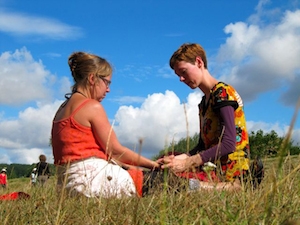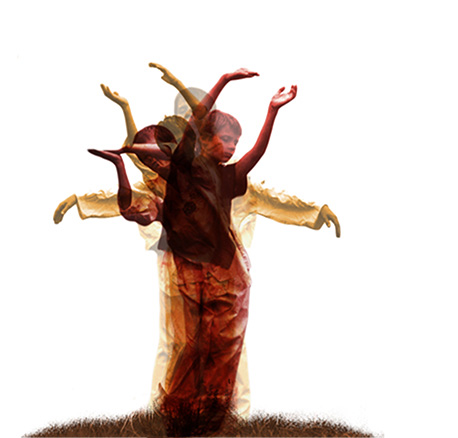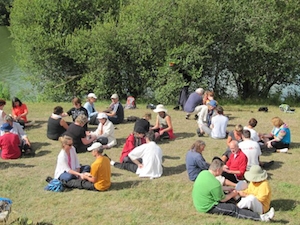Chi Kung Healing – An Overview

Chi Kung Healing (CKH) relates to two distinct areas: Clinical Chi Kung/ Qigong, which is treatment by the healer; and Self-Practice, which is done by the individual and often recommended by the healer. As such, it is the only healing modality that is both clinical treatment and personal practice.
It should be noted that this work is also known by various other names, such as Qigong Healing, Medical Qigong, Qigong Therapy etc.
CKH is a very holistic, integrated, energetic approach to health and healing. It is strong in prevention as well as treatment of illness and imbalance. Although all symptoms are considered, Chi Kung Healers have ways of assessing the actual state of the energy-body which directs the treatment process as well as the individual practices recommended. This form of Chi Kung does not ‘do to’ someone, as much as it ‘does with’ them.
Clinical Chi Kung – Assessment
This is done in many styles (using hands and pendulum), often intuitively. It is reading these aspects of the energy-body:
The Chi Field (cocoon of energy around the body)
Three Tan Tien (energy fields within, and extending out from the body)
Cauldrons (7 or more, called chakras as they extend off the body)
Eight extraordinary meridians (including the Master and Coupled points that rule them)
Twelve organ meridians (and many of the points along these meridians such as: the source, junction, meeting, entry or exit, window of sky or Five Element points) and internal pathways
Twelve major organs (and extra organs or glands)
Five sense organs (as windows to the outside world for the organs)
Back/Shu (Associated Effect) points
Front/Mu (Alarm) points
Hara or “eye in the solar Plexus” (and to what degree it is open)
Any extra, aggressive, or disturbing/hurtful energy in the system (or affecting the system) that needs to be dispelled
The balance of the Five Elements/ Five Phases in relationship to each other (what’s the picture)
Stagnation (tight, not moving), excess (too much), or deficiency (too little) held in the elements / organs.
The assessment reveals an integrated picture of Body (physical), Soul (emotional), and Spirit (mental and spiritual) – always reflected in the signs and symptoms the person is experiencing, but revealing much more, what is beneath them.
Clinical Chi Kung – Treatment
Both off-body and on-body, using the hands and mind, this energetic-based process stimulates movement of energy in ‘blocks’ revealed in assessment. Treatment can be very specific – targeted to points, meridians, organs, or areas blocked in some way – or more general. Usually it is a combination starting with general movement/ activation of energy in the field and body (which relaxes and deepens the state of consciousness), then specific treatment in areas causing problems, then general treatment again to re-harmonize the system, ending with some grounding method. Knowing the symptoms can help, but usually the treatment and the practice recommended is related to a deeper picture of the person, understood through assessment and really ‘receiving’ them.
Chi Kung Healing always includes practice by the individual (both the person seeking help and the healer). This self-practice is considered the foundation of CKH because what you do for yourself has the most profound effects on the system and because daily practice is like daily self-treatment. Usually it is recommended to start with simple and general forms to help the system gradually start shifting the homeostasis to a more balanced pattern. Then, if needed, specific practices are recommended to strengthen the constitution, temperament, or character (jing, chi, shen) through its ‘weakest link’, the ‘key’ to that person at that time.
While practice is the foundation, most people (especially if ill or weakened) will benefit greatly from some individual treatment to help name, understand and open (or lubricate) the most blocked areas so practice can proceed more smoothly. It is not necessary, but often desirable and helpful. The Chi Kung Healer will be able to watch the progress of personal practice through the assessment of the Energy-Body and be able to help tailor the practice forms as needed. This form of Chi Kung pre-dates what has become known as Traditional Chinese Medicine (TCM), is usually simpler and has a strong basis in the classical Taoist roots.
It is almost impossible to do Chi Kung Healing treatment or practice on an isolated, symptom-based approach, because you are always working with a whole picture. The practitioner is watching the individual’s expression of energy (in wave or particle) through thought, picture, sensation, emotion or body. They cannot be separated because they are superimposed. Most Western Chi Kung healers work with aspects of psychology as an integrated part of the healing process. They understand the dance between:
Jing (spirit/ essence in full physical expression in body and organs), Chi (the energy/ vitality of essence pulsating through all the meridian streams and expressed in the emotions), and Shen (the consciousness/ spirit of essence expressed in thoughts and pictures through the many levels of mind).
To most Chi Kung Healers these aspects of the energy-body are all material (just less and less dense) and are an expression of the non-material or spiritual aspect of all there is. They can help the individual receive this ‘expression’ of their own consciousness through their energy-body (in treatment or practice) by means of: body area, sensation, emotion, picture, meaning, and the need for observation or change. Although they do gather this information in their own way, they usually do not give it to the individual (as in psychic readings) but instead ‘hold the space’ for the individual to develop this understanding themselves and thus be more empowered.
Author: Damaris Jarboux
is based in Boulder, Colorado where she runs the Centre Place Healing Centre.
Images: Ronnie Robinson


